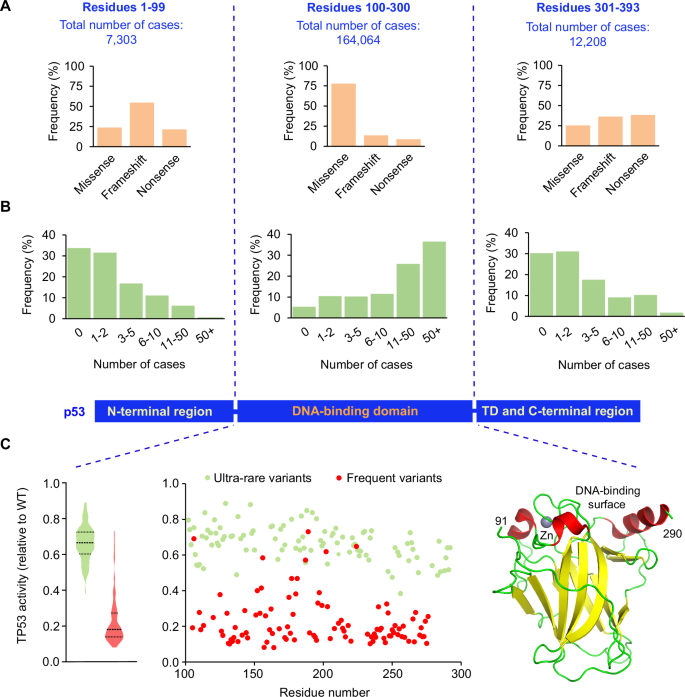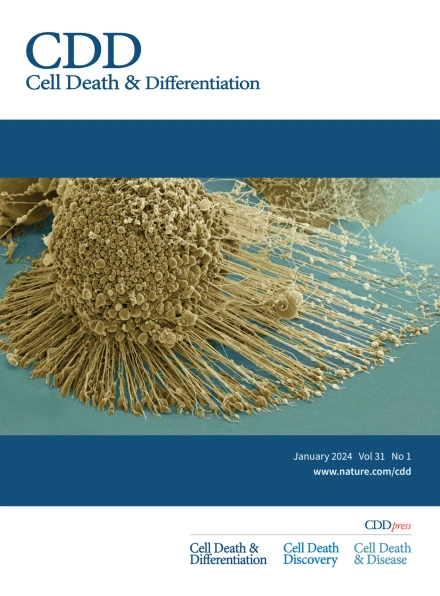TP53:最不幸的基因?
IF 13.7
1区 生物学
Q1 BIOCHEMISTRY & MOLECULAR BIOLOGY
引用次数: 0
摘要
转录因子 p53 在细胞抵御癌症发展的过程中发挥着关键作用。几乎在每一种肿瘤中,它都会失活,而在每第二个肿瘤中,这种失活都是由于 TP53 基因突变造成的。在这篇论文中,我们展示了这种多样化的突变谱在所有其他癌症相关蛋白中是独一无二的,并讨论了在癌症中选择 TP53 突变的驱动因素。我们强调,有几个因素共同作用,使 p53 蛋白特别容易因突变而失活,而突变一直困扰着我们的基因组。在过去的进化过程中,TP53 基因的结构和功能被塑造成了多能肿瘤抑制因子,但其 DNA 结合域的结构脆弱性也随之增加。TP53 功能缺失--以及相关的显性阴性效应--是损害 TP53 肿瘤抑制功能的主要机制,无论其中一些变异是否伴有新表型。本文章由计算机程序翻译,如有差异,请以英文原文为准。


TP53: the unluckiest of genes?
The transcription factor p53 plays a key role in the cellular defense against cancer development. It is inactivated in virtually every tumor, and in every second tumor this inactivation is due to a mutation in the TP53 gene. In this perspective, we show that this diverse mutational spectrum is unique among all other cancer-associated proteins and discuss what drives the selection of TP53 mutations in cancer. We highlight that several factors conspire to make the p53 protein particularly vulnerable to inactivation by the mutations that constantly plague our genome. It appears that the TP53 gene has emerged as a victim of its own evolutionary past that shaped its structure and function towards a pluripotent tumor suppressor, but came with an increased structural fragility of its DNA-binding domain. TP53 loss of function - with associated dominant-negative effects - is the main mechanism that will impair TP53 tumor suppressive function, regardless of whether a neomorphic phenotype is associated with some of these variants.
求助全文
通过发布文献求助,成功后即可免费获取论文全文。
去求助
来源期刊

Cell Death and Differentiation
生物-生化与分子生物学
CiteScore
24.70
自引率
1.60%
发文量
181
审稿时长
3 months
期刊介绍:
Mission, vision and values of Cell Death & Differentiation:
To devote itself to scientific excellence in the field of cell biology, molecular biology, and biochemistry of cell death and disease.
To provide a unified forum for scientists and clinical researchers
It is committed to the rapid publication of high quality original papers relating to these subjects, together with topical, usually solicited, reviews, meeting reports, editorial correspondence and occasional commentaries on controversial and scientifically informative issues.
 求助内容:
求助内容: 应助结果提醒方式:
应助结果提醒方式:


